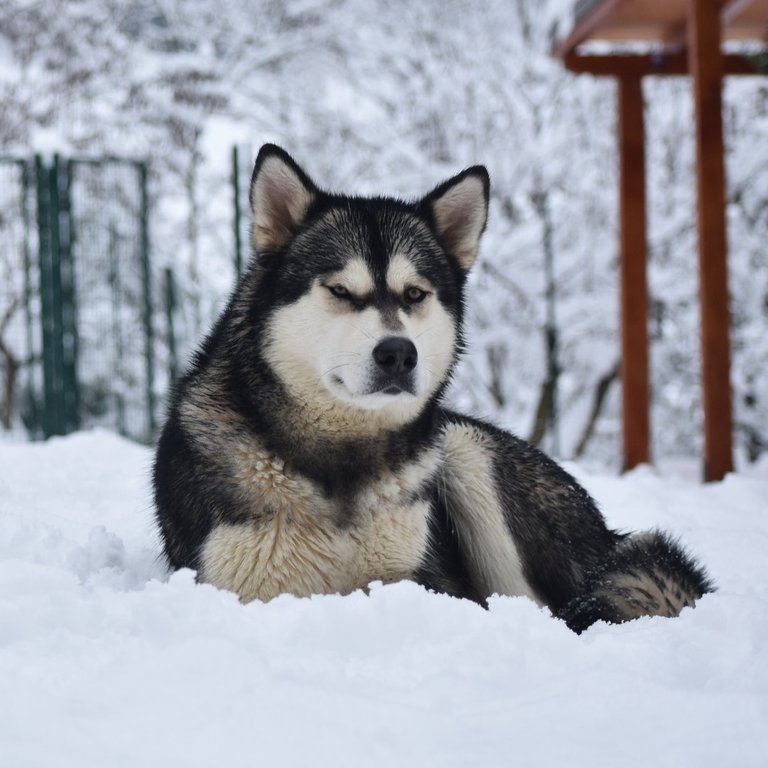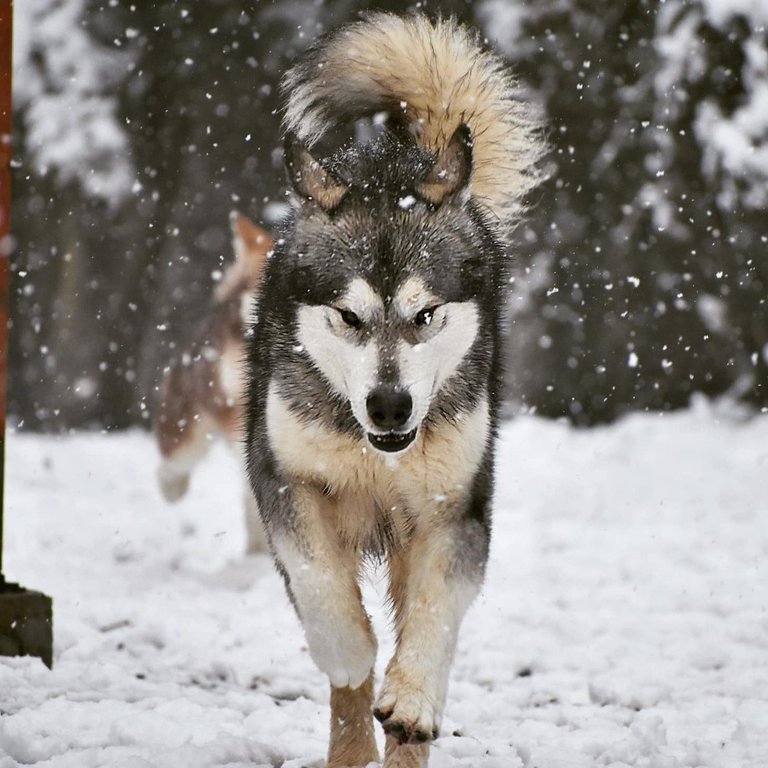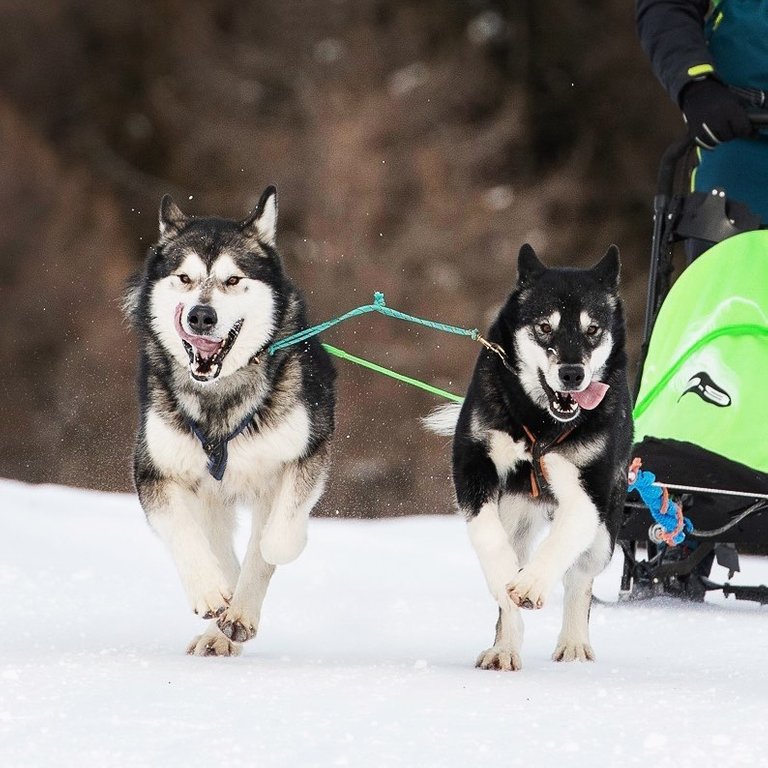I kindly ask for a bit more patience before introducing the team presentation. First and foremost, I would like to introduce you to the two breeds that currently make up our team: the Alaskan Malamute and the Canadian Eskimo Dog. I have decided to include both of these magnificent breeds in my team because, despite being quite similar, I believe each possesses specific qualities that are important for creating a well-rounded team. These qualities are not only typical of each breed but also, and most importantly, reflect the unique personality of each of these exceptional dogs.
Let's begin with the Alaskan Malamute, the core of our breeding program and the backbone of the team.

A Malamute story
Thousands of years ago, there lived an Inuit population known as the Mahlemiut. The origins and history of these tribes are not perfectly clear, but it is believed that they migrated from Siberia to Alaska through the Bering Strait, eventually settling in an area called Kotzebue. They were a nomadic people, reliant on hunting and accustomed to traversing vast distances tirelessly. The Mahlemiut were aided in their daily activities, hunting, and travel by large dogs that were considered integral members of the family, often living in the same tents as humans. Dogs displaying aggression or instability were consequently excluded from the tribe. Similarly, those dogs exhibiting greater skills, resilience, and intelligence were favored. This marked one of the earliest instances of human selection.
Throughout their history, the Mahlemiut had few interactions with other communities, leading to the development of a distinct lineage of dogs over time. These dogs, while quite different from today's Alaskan Malamutes, even weighed several dozen kilograms more. Nevertheless, many believe these animals are indeed the ancestors of today's Alaskan Malamutes.
Historical events that profoundly impacted the history of America and Alaska also had significant repercussions on these populations and, consequently, on their dogs. During the gold rush, fortune-seeking explorers began to acquire these dogs from the indigenous populations, interbreeding them with individuals possessing traits more suitable for the emerging new world. The characteristics of these dogs that had accompanied humans for centuries began to shift, eventually resembling the dogs we recognize today.
As often occurs, the actions of a few individuals can influence history greatly. One of the primary modes of transportation in Alaska was, of course, the sled, and some of those who utilized sleds, known as mushers, endeavored to save the nearly disappearing line of dogs. This is how the first breeders of sled dog lines began selecting the early Malamutes, dogs known for their exceptional strength, intellect, and loyalty.
The first breeder to focus on this breed was Arthur Walden, who later passed his dogs to Eva "Short" Seeley, often considered the true mother of the Alaskan Malamute. It was she who, in 1935, had the breed recognized by the American Kennel Club. The line she developed, known as Kotzebue, had a gentle and calm temperament, much like the dogs of the early Mahlemiut and the Alaskan Malamutes of today. Concurrently, other lines were also developed, such as M'Loot, Hinman-Irwin, and Husky Pak, which over time were mixed with the Kotzebue line, giving rise to the dog we know today.
One of the most significant events that brought attention to this breed in the public eye is undoubtedly the story of Balto and the legendary race to save Nome. Nome was a town in Alaska over 1000 kilometers away from the nearest railway. On January 20, 1925, with the town cut off by snow and ice, an alarm was raised via an old telegraph: a diphtheria epidemic was sweeping through the area, and numerous vials of serum were urgently needed. The airplane carrying the serum from Seattle had to turn back due to bad weather, so the serum was sent from Anchorage to Nenana, the nearest station. From there, the remaining over 1000 kilometers had to be covered using sled dogs along the usual mail routes. Several mushers, accompanied by their dogs, braved extreme weather conditions, with average temperatures ranging from 20 to 50 degrees below zero, enduring snowstorms and frigid Arctic nights, engaging in an unrelenting relay that delivered the medicine to Nome in just five days along a trail that would typically take a month to traverse. Despite Balto being remembered as the hero of Nome, he was just one of many dogs that ran across Alaska in those days to save the town. He was the one who "delivered" the serum, but his "brothers" were equally dedicated. Particularly, Togo, the Siberian Husky of renowned musher Leonhard Seppala, led his team for 417 kilometers, crossing frozen lakes and otherwise impassable forests without any incident slowing his pace. Balto is also remembered, somewhat inaccurately, as a Siberian Husky, but he was most likely a crossbreed with various bloodlines. What's certain, however, is that many of the teams that fought in those days were composed of Alaskan Malamutes.
While the mushers who took part in the relay undoubtedly played a fundamental and irreplaceable role, the achievement would not have been possible without the assistance of these exceptional dogs. The mushers themselves acknowledge that on many occasions, especially during the nights and storms, visibility was so poor that identifying the route was impossible. In those situations, only the instinct and courage of the lead dogs could keep the sleds on the right track.
These are the Alaskan Malamutes. Dogs that have walked through history alongside their faithful human companions. Dogs dependent on humans, yet dogs upon whom humans have relied for many centuries. And it is precisely this dynamic that makes the relationship with each of them so unique and special.

Malamutes today
Today, the Alaskan Malamute is a strong, proud, and powerful dog. They are dominant animals, especially in the case of males, yet they remain calm and reflective. Unlike Siberian Huskies, they are not suited for speed trials; instead, they excel in tests of endurance and strength. They were specifically bred to haul heavy loads over long distances using sleds. Unfortunately, the majority of today's competitions focus more on speed, and our category is gradually fading away, even though it comprises the largest number of breeds. This category includes Alaskan Malamutes, Canadian Eskimo Dogs, Samoyeds, Greenland Dogs, and Yakutian Laikas.

Our hope, of course, is that by continually raising awareness about these breeds and their unique characteristics, it will one day be possible to restore importance to this category. This way, the preservation of the cultural heritage they carry can become more effective.
Congratulations @nunamalamute! You have completed the following achievement on the Hive blockchain And have been rewarded with New badge(s)
Your next payout target is 50 HP.
The unit is Hive Power equivalent because post and comment rewards can be split into HP and HBD
You can view your badges on your board and compare yourself to others in the Ranking
If you no longer want to receive notifications, reply to this comment with the word
STOPCheck out our last posts: